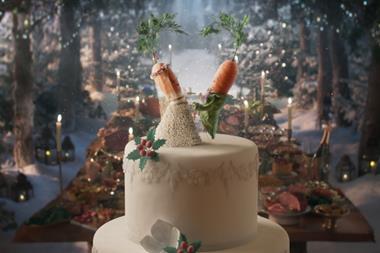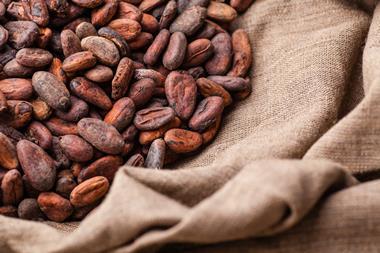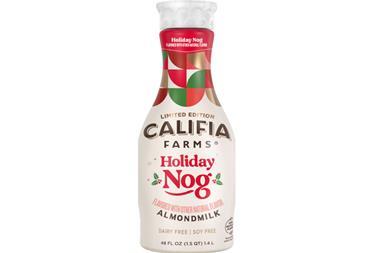After the Christmas glut, the gifting engine shows no signs of dieting...
Christmas may be the key season for gifts, but companies are seeing an uplift in sales at other times of the year as retailers become more keen to dedicate space for a range of occasions.
Andrea Taylor, Masterfoods’ trade relations manager, explains the gifting hierarchy for the Celebrations brand: “The run-up to Christmas from October to December is the key sales period for us. Easter is second, followed by a number of others including Father’s Day, Mother’s Day and gifts for teachers.”
Mark Collins, trade marketing manager at First Drinks Brands, says while Christmas is the major event, the company is working to optimise “various opening points across the year to encourage people to buy into the category”.
Collins says this strategy is common and that companies are becoming more aware of incremental sales possibilities.
Research conducted by the company found that a third of sales in its whisky portfolio are bought as gifts and half of those purchasers never drink whisky.
Furthermore, 72% of these non-users are women and the company plans a harder sell to them as well as to the traditional male purchasers this year.
Sarah Petts, channel and communications manager at Kraft Foods, sees spring as an important time for chocolate manufacturers. “Spring is a season of celebration,” she says. “With Valentine’s Day, Mothering Sunday and Easter, this season accounts for one third of annual confectionery gifts.”
Kraft also understands the importance of tailoring products for every occasion to encourage purchase. Last year the company launched special edition sleeves for Toblerone in time for Father’s Day, with packs displaying pictures of traditional uninventive presents such as socks, a tie and a pair of slippers. For Valentine’s Day this year, the company is launching special edition Toblerones with wording such as Lover Boy and To My Love.
Easter, however, continues to be the single biggest spring sales opportunity. Standing £211m in retail sales [ACNielsen], more than 68 million shell eggs and 200 million filled eggs were sold at Easter 2005.
Yet, according to Cadbury Trebor Bassett, shoppers left it later than usual last year to purchase their eggs during a shorter Easter season, while continued price pressures resulted in value decline of 4.4% compared with the previous year.
Hopes are pinned on the luxury egg segment to boost overall sales in 2006. Last Easter, ACNielsen recorded growth of 124% for luxury eggs.
Hallowe’en is starting to fill the void in the run-up to Christmas. Rachel Wyatt, director of marketing at confectionery manufacturer Kinnerton, says: “The Hallowe’en events that retailers are creating tend to pull in products across categories. Many retailers choose to develop their Hallowe’en confectionery under their own brand and these sit next to some big brands.”
Nestlé Rowntree also says it will be stepping up its activity for Hallowe’en this year with pumpkin-shaped chocolates and bug-shaped confectionery following a successful 2005.
As the Hallowe’en season is shorter than gifting occasions such as Christmas and Easter, this year will see an earlier introduction of gifts as retailers optimise opportunities.
Targeting specific gift occasions, however, is not a focus for all companies.
Katie Loines, senior brand manager at Green & Black’s, says that it steers clear of this. “We wouldn’t take a more gimmicky route as we have a premium, stylish positioning.”
Christmas may be the key season for gifts, but companies are seeing an uplift in sales at other times of the year as retailers become more keen to dedicate space for a range of occasions.
Andrea Taylor, Masterfoods’ trade relations manager, explains the gifting hierarchy for the Celebrations brand: “The run-up to Christmas from October to December is the key sales period for us. Easter is second, followed by a number of others including Father’s Day, Mother’s Day and gifts for teachers.”
Mark Collins, trade marketing manager at First Drinks Brands, says while Christmas is the major event, the company is working to optimise “various opening points across the year to encourage people to buy into the category”.
Collins says this strategy is common and that companies are becoming more aware of incremental sales possibilities.
Research conducted by the company found that a third of sales in its whisky portfolio are bought as gifts and half of those purchasers never drink whisky.
Furthermore, 72% of these non-users are women and the company plans a harder sell to them as well as to the traditional male purchasers this year.
Sarah Petts, channel and communications manager at Kraft Foods, sees spring as an important time for chocolate manufacturers. “Spring is a season of celebration,” she says. “With Valentine’s Day, Mothering Sunday and Easter, this season accounts for one third of annual confectionery gifts.”
Kraft also understands the importance of tailoring products for every occasion to encourage purchase. Last year the company launched special edition sleeves for Toblerone in time for Father’s Day, with packs displaying pictures of traditional uninventive presents such as socks, a tie and a pair of slippers. For Valentine’s Day this year, the company is launching special edition Toblerones with wording such as Lover Boy and To My Love.
Easter, however, continues to be the single biggest spring sales opportunity. Standing £211m in retail sales [ACNielsen], more than 68 million shell eggs and 200 million filled eggs were sold at Easter 2005.
Yet, according to Cadbury Trebor Bassett, shoppers left it later than usual last year to purchase their eggs during a shorter Easter season, while continued price pressures resulted in value decline of 4.4% compared with the previous year.
Hopes are pinned on the luxury egg segment to boost overall sales in 2006. Last Easter, ACNielsen recorded growth of 124% for luxury eggs.
Hallowe’en is starting to fill the void in the run-up to Christmas. Rachel Wyatt, director of marketing at confectionery manufacturer Kinnerton, says: “The Hallowe’en events that retailers are creating tend to pull in products across categories. Many retailers choose to develop their Hallowe’en confectionery under their own brand and these sit next to some big brands.”
Nestlé Rowntree also says it will be stepping up its activity for Hallowe’en this year with pumpkin-shaped chocolates and bug-shaped confectionery following a successful 2005.
As the Hallowe’en season is shorter than gifting occasions such as Christmas and Easter, this year will see an earlier introduction of gifts as retailers optimise opportunities.
Targeting specific gift occasions, however, is not a focus for all companies.
Katie Loines, senior brand manager at Green & Black’s, says that it steers clear of this. “We wouldn’t take a more gimmicky route as we have a premium, stylish positioning.”














No comments yet